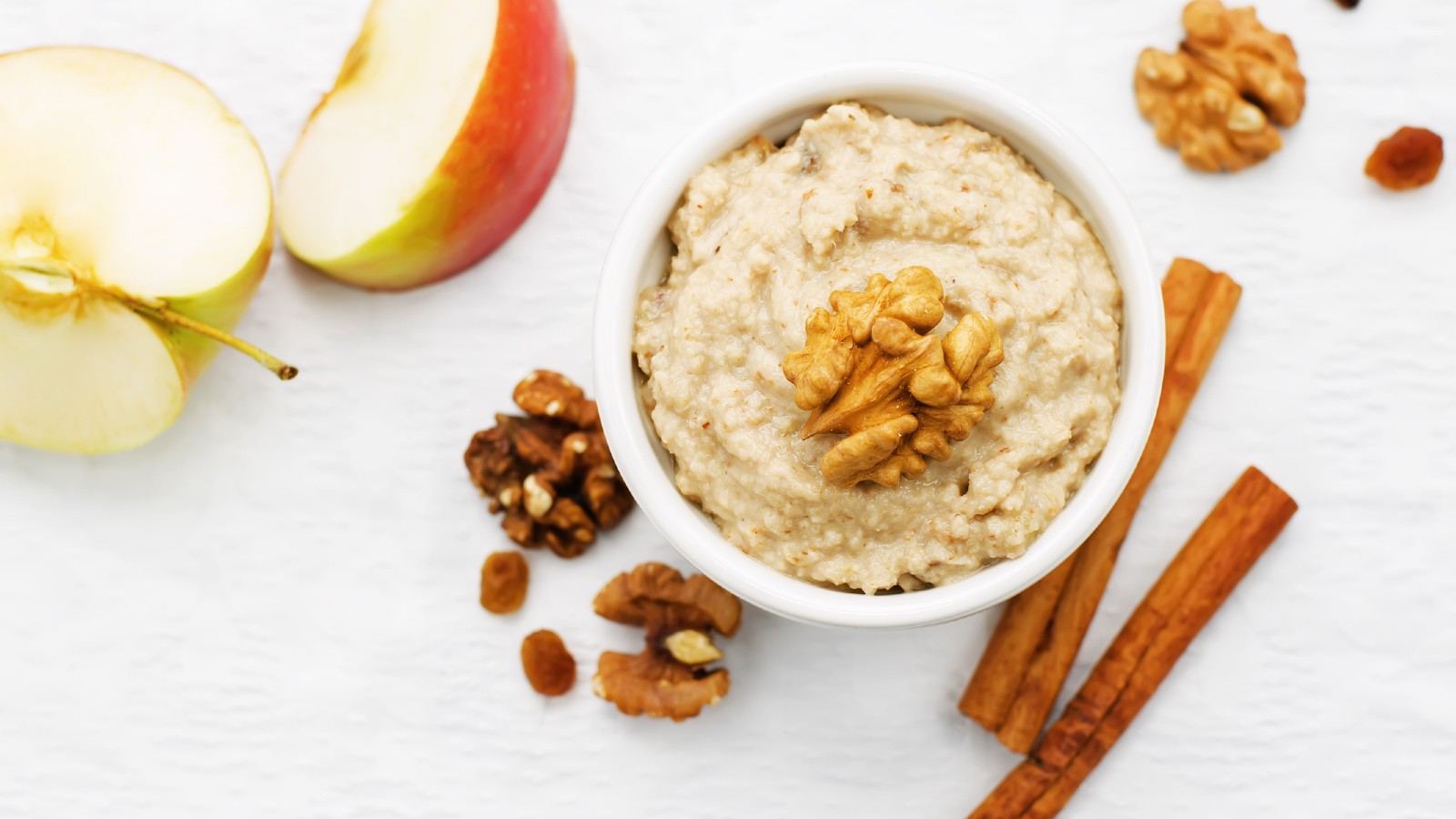While haroset — the ubiquitous Passover spread (or is it a relish?) — is present on every seder plate, each Jewish community has their own, very distinct version, incorporating everything from walnuts to chestnuts, dates to bananas, and cinnamon to black pepper.
Most agree that haroset represents the mortar used by Jewish slaves in Egypt. But, you know, two Jews, three opinions. Some say that haroset is a symbol of the apple orchards where Jewish slaves secretly procreated, inspired by a verse from the Song of Songs.
There’s actually no mention of haroset in the Torah, or a blessing for it in the Hagaddah. It first pops up in the Mishnah, or Oral Torah, where Rabbis seem to have assigned meaning to a pre-existing condiment. Gil Marks, author of the Encyclopedia of Jewish Food, dates haroset back two thousand years, explaining it was “probably influenced by fruit relishes serves at the Roman symposium.” At these symposiums, explains David Arnow, author of Creating Lively Passover Seders, free men discussed philosophy while drinking a lot of wine and “dipping” food into nut-and-spice mixtures.
There are seemingly endless combinations of nuts, spices, and fruits when it comes to haroset. Let’s get into them.
The Nosher celebrates the traditions and recipes that have brought Jews together for centuries. Donate today to keep The Nosher's stories and recipes accessible to all.
Greece and Turkey
Balkan haroset tends to be heavy on the raisins, which are sometimes mashed in vinegar or lemon juice. Walnuts, almonds, and sweet wine are also common ingredients. Turkish Jews add a citrus zing with orange or lemon zest and/or juice. Sound good so far? They’ve also been known to add a pinch of ground brick (yes, you read correctly). Try this recipe (sans brick) for a taste.
Yemen
This heavily spiced haroset is fragrant with black or white pepper, cardamom, cloves, and ground ginger. The spices are mixed with dates, raisins, and pomegranate seeds, which are ground into a paste with almonds or walnuts, and sesame seeds.
Eastern Europe
Ashkenazi Jews opt for an apple-based spread, due to the availability of apples in Central and Eastern Europe, as well as the aforementioned orchard symbolism. The apples are combined with walnuts, sweet red wine, and cinnamon. This step-by-step video tutorial makes it look easy.
Italy
There are many regional variations of Italian haroset incorporating an array of ingredients, such as dried fruit (prunes, dates, and figs), citrus, nuts (pine nuts, pistachios, and chestnuts), and warm spices. We’re partial to this version.
Morocco
Why is this haroset different to all other haroset? Well, because it’s rolled into truffles. This practice originated in medieval Spain, where sweetened dried fruits, apples, chestnuts, almonds were rolled into balls and drizzled with white vinegar.
Iraq and India
Iraqi communities — including India’s Calcutta community, made up of Middle Eastern immigrants — cook dates down into a syrup, then sprinkle in chopped walnuts or almonds. This is often known as halek or haleg instead of haroset, and is made in large batches to be used year-round.
Surinam
Drawing on the concept of the seven fruits (or species) of Israel, this version calls for a mix of dried fruit, including pears and apricots, in addition to grated coconut and cherry preserves.
Iran
Some Persian Jews make a 40-ingredient haroset to represent the 40 years the Israelites wandered in the desert post-Exodus. Others call for more edited mix of fruit, nuts, and spices, including apples, bananas, pomegranates (either fresh seeds or syrup), pistachios, and cardamom.
Egypt
This relatively simple recipe is far greater than the sum of its parts. Dates and sultanas are cooked in sweet wine until they break down and form a paste, then walnuts are added for crunch.
Need a way to finish up leftover haroset (whatever variety you go for)? Look no further than this Haroset Chicken with Thyme recipe.



